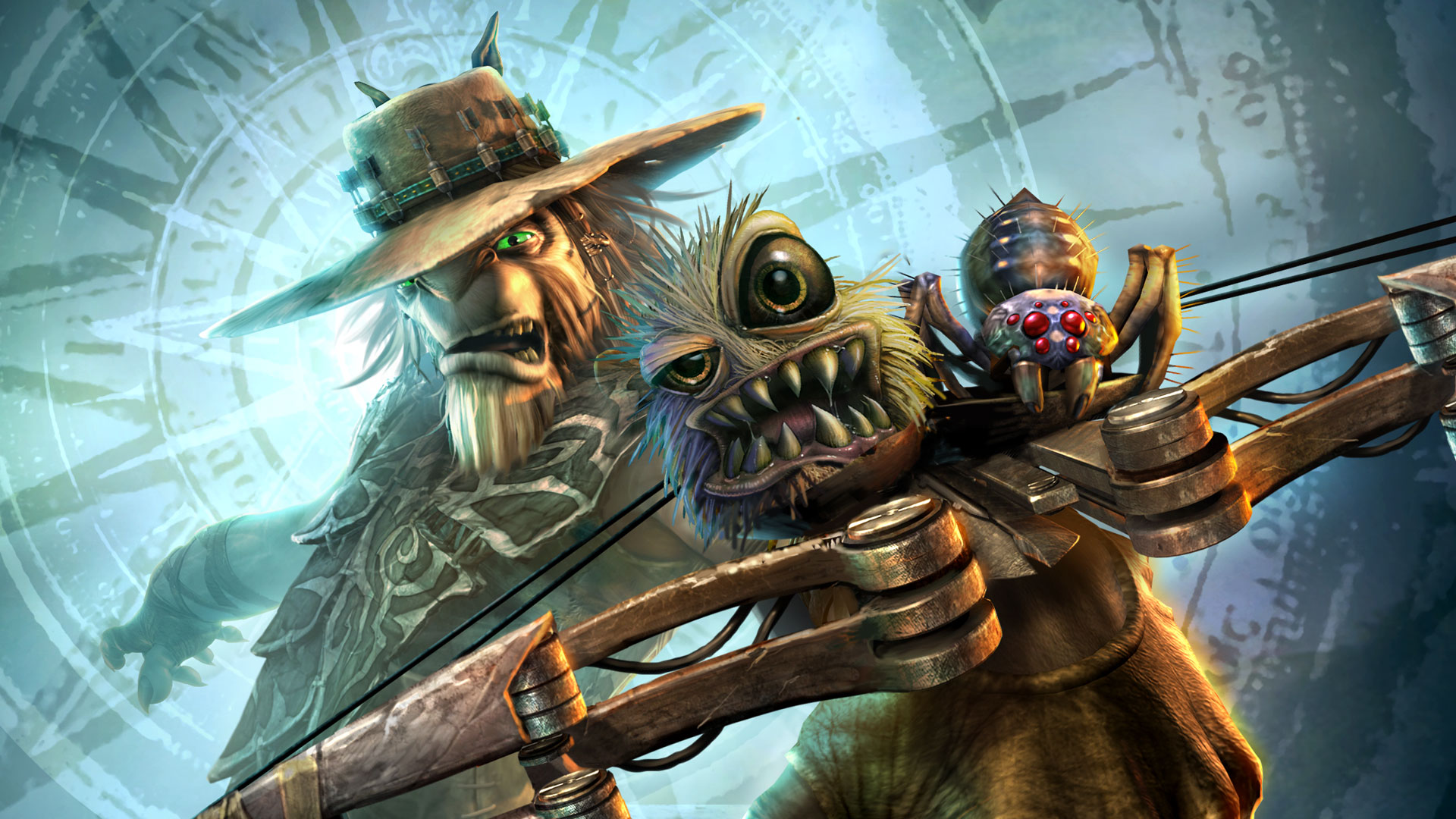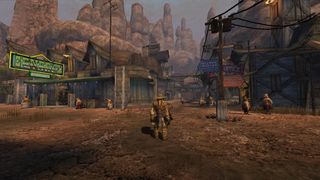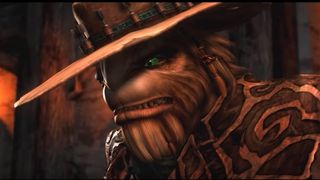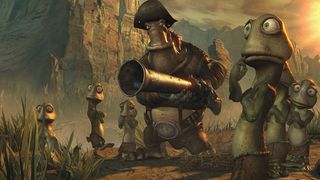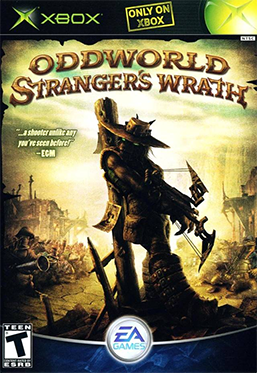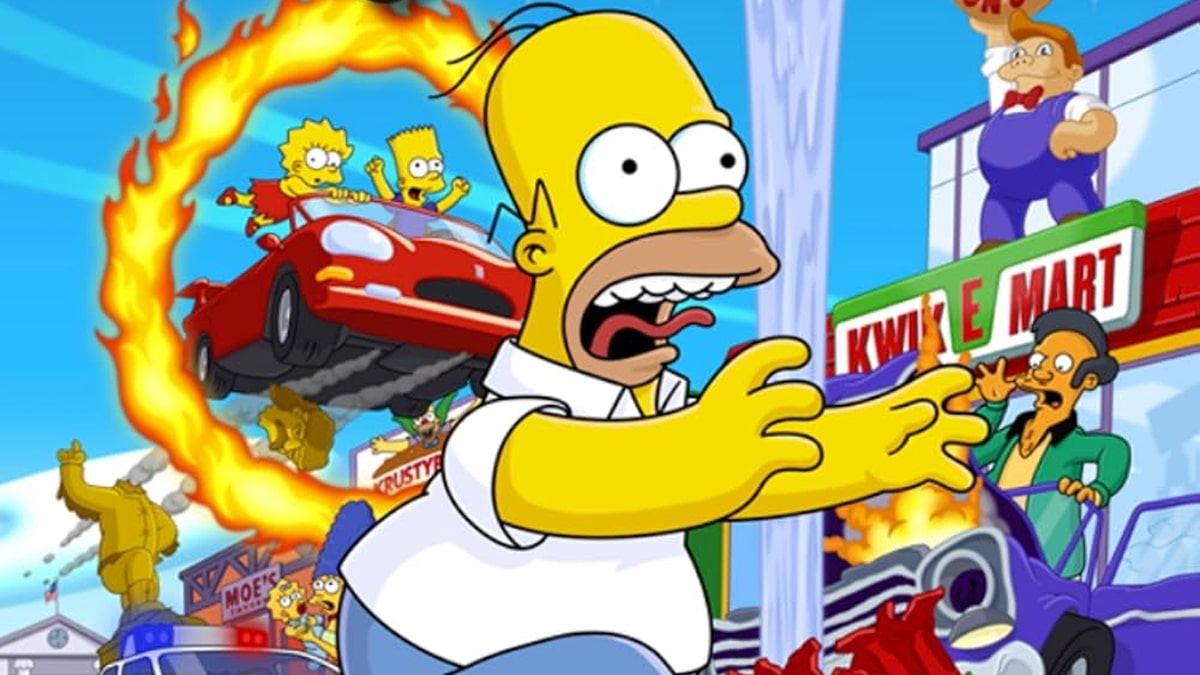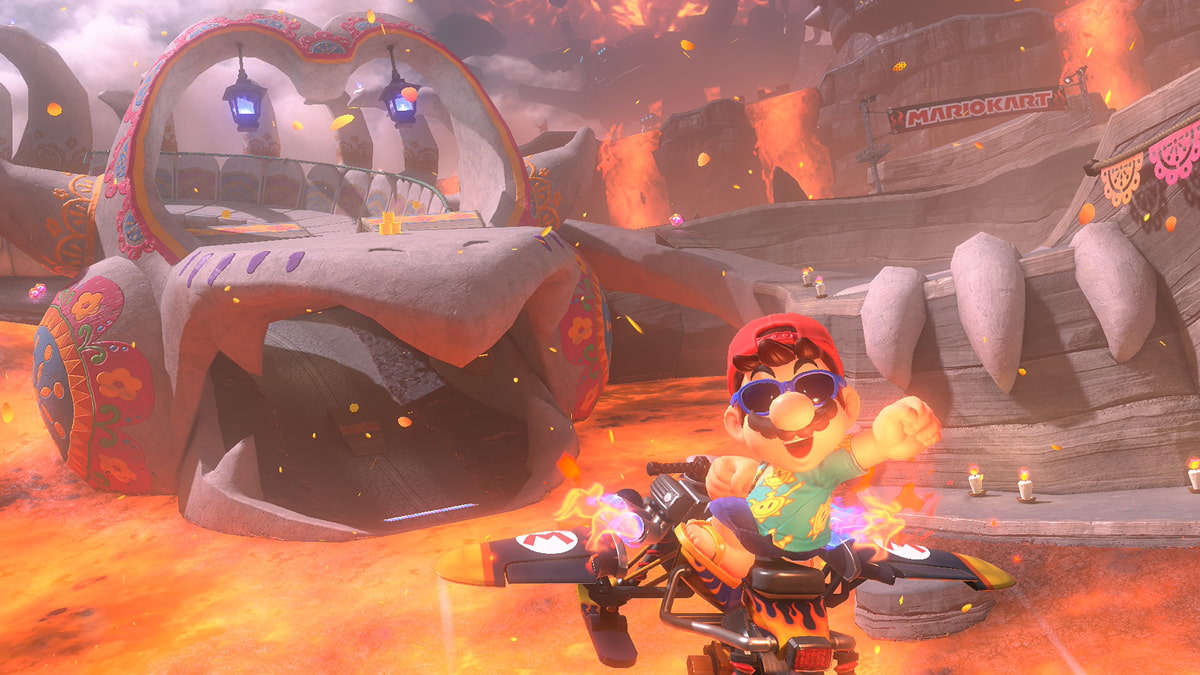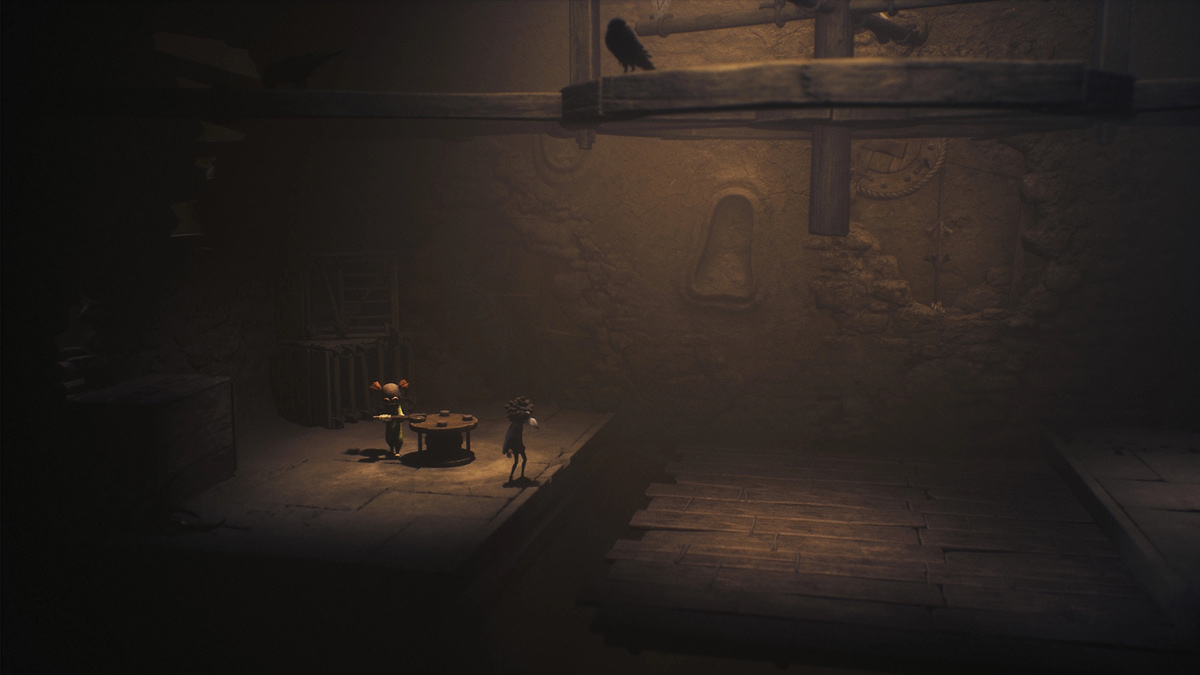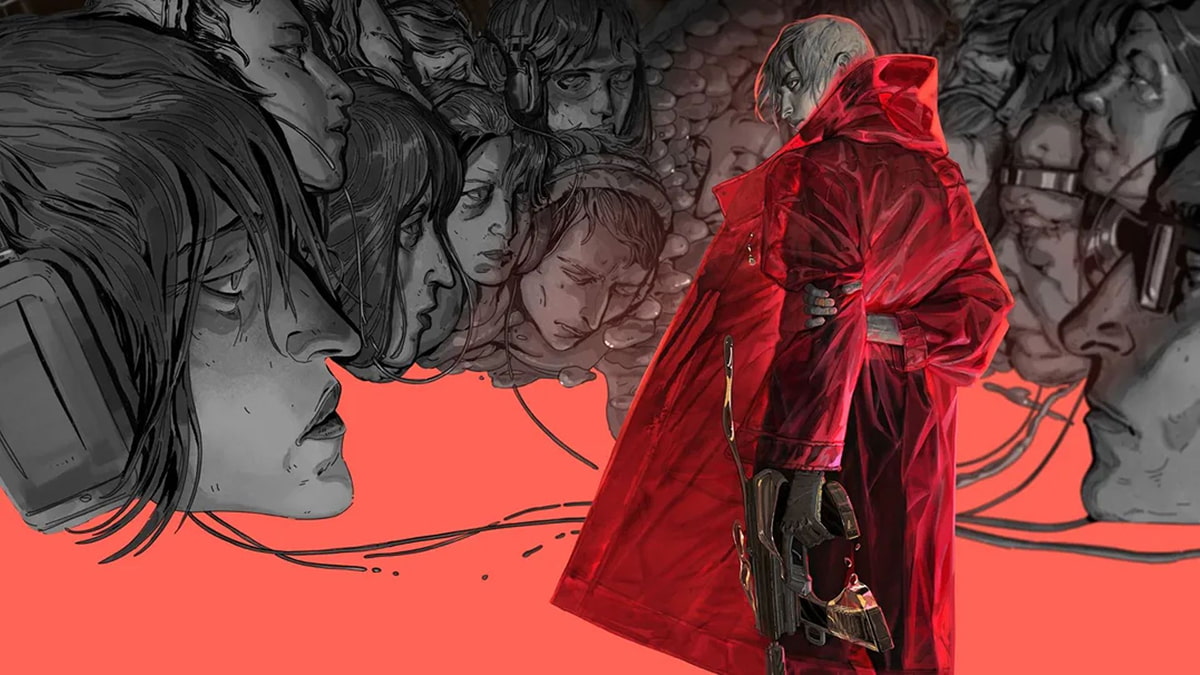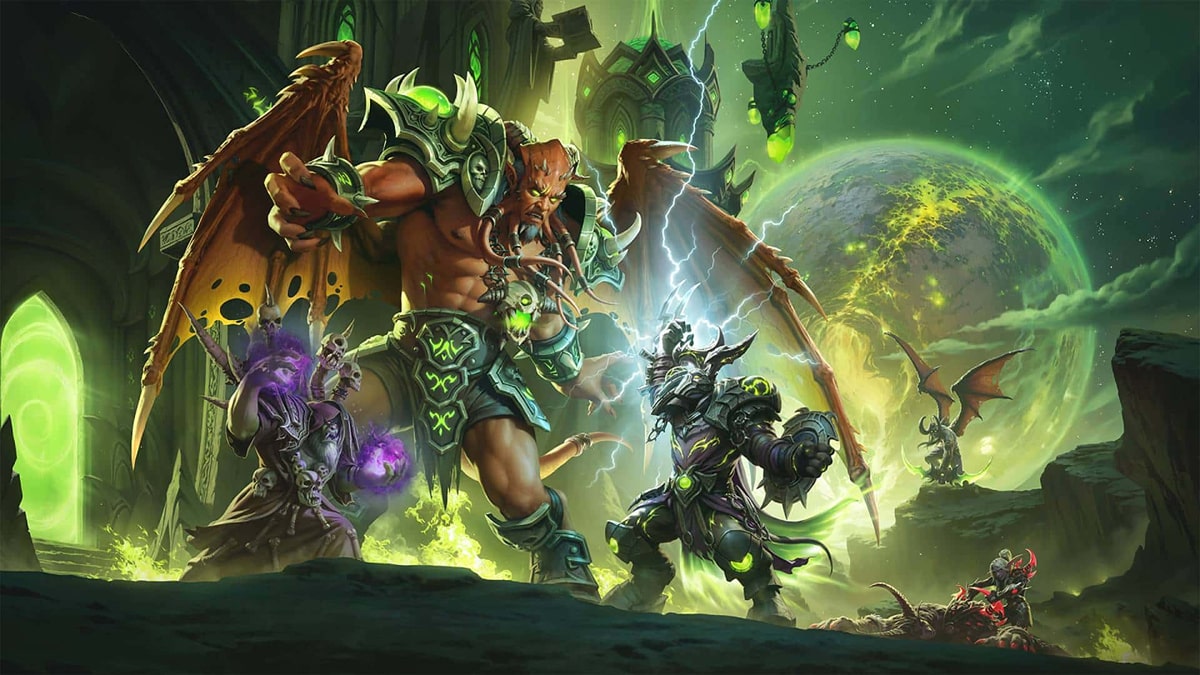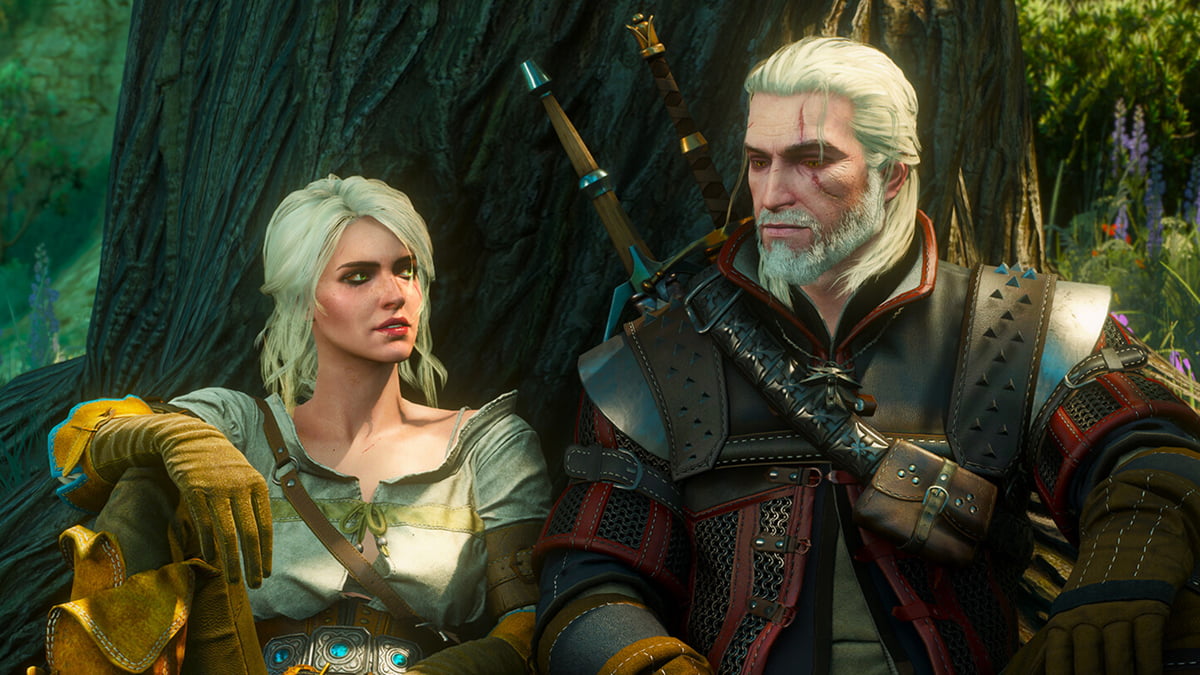You can trust VideoGamer. Our team of gaming experts spend hours testing and reviewing the latest games, to ensure you're reading the most comprehensive guide possible. Rest assured, all imagery and advice is unique and original. Check out how we test and review games here
With a stream of rereleases rushing through it, the Nintendo Switch’s screen can feel like a rearview mirror. Whether you glance at it leisurely, as you might on a long Sunday drive, or you shoot it pained, desperate looks, the way you would if you were trying to shake a nasty tail, depends on what you’re playing. This last week, spent in the company of Oddworld: Stranger’s Wrath HD (which first released on the PS3, in 2011, and on the Vita in 2012), I have found myself swerving between both moods—just as the game’s hero, Stranger, flits between first-person shooting and third-person platforming. The game first released on the Xbox, in 2005, a time for video games that now seems as sun-dappled and distant as Super-8 footage of the seventies.
Stranger is a bounty hunter, going about his work on Oddworld—the unbounteous planet that has played host to the series since its inception, with Oddworld: Abe’s Oddysee, in 1997. The landscape he prowls is dry and dust-whipped: a warped spin on the Old West. And boy does he prowl. When he sprints, he drops to all fours and scampers like a cat; while his hunting, no less feline in its focus, is done by ensnaring small critters and then pelting them, courtesy of his crossbow, at the enemy—lending new meaning to the term “live ammunition.” Stranger would have been a fine fixture in Dutch van der Linde’s gang; only, as he points out early on, he “never liked guns.” (Quite why I don’t know; does he consider launching living creatures any more moral than metal bullets?)
What he does like is Moolah, the world’s currency, which he needs to fund an operation—the nature of which is kept cloudy for much of the game. Taking on various contracts, beginning in a town called Gizzard Gulch and journeying through the likes of Buzzarton and Mongo Valley, you pursue your quarry using a concoction of stealth, trap-setting, brawling, and shooting. There are sneaky tactics involved in playing smart. Catch yourself a Chippunk, the better to lure your foes to a certain spot, and then clobber them unconscious with a Thudslug; or line a doorway with Fuzzles—a sort of piranha-hamster hybrid—and watch them swarm the unsuspecting fool that bumbles by. The only trouble is that such wily strategies are only there if you want them. You can just as easily barrel through and thump your enemies into a daze, before sucking them into a trap like Luigi with his Poltergust. More often than not, I found myself leaning toward laziness. As sins go, sloth beats wrath.
Once you’ve cleared an area, you haul your payload—either dead or alive, with a reward that scales accordingly—to the local bounty office to get paid. I have a soft spot for plots that are propelled by the crackle of money; they exert a speedy, universal pull—a prickle of excitement tinged with pity. It’s in keeping with the wider Oddworld series, too, which paints a vibrant alien land choked by capitalist churn and which Stranger’s Wrath, with its parched browns and Western sweep, seems at first to break away from. The game’s writer and director is Lorne Lanning, who dreamt up Oddworld as a five-part saga that would flourish into a string of films. Sadly, Lanning’s bristling ambitions have floundered, by his own account, in the unfriendly waters of marketing. At D.I.C.E. Europe 2013, he said, of Stranger’s Wrath, that, through factors out of the developers’ hands, “we wind up with zero marketing campaign and exposure.”
I chalk my own indifference to Oddworld up not to any failure in marketing or exposure but to its visual style. The hero of the first game, Abe, with his verdigris complexion, bulging yellow eyeballs, and lips bound with stitches, exuded not quirkiness but queasiness. He trudged through rusty, rancid factories lit with toxic greens and ghastly flare-ups of orange and red. Fans might argue that unpleasantness is rather the point. Indeed, it’s difficult not to notice the way that the plight of Abe’s people—subjugated by whip-cracking corporate overlords—parallels, with an exaggerated smirk, the strains of game development under a large publisher. But thank goodness for Stranger’s Wrath, which, honed by high-definition, calms the sickly colours and offers up a game that is, for want of a better word, odd.
For a start, there is Stranger, who, despite his profession, is a gentle presence. He speaks in a cavernous drawl, breathy and brittle, and he is clearly a keeper of secrets. Clicking the right analogue stick, to get behind his eyes, doesn’t get you into his head. And what about that mechanic? It strikes me that few games give you the option—outside of cosmetic preference, as in Fallout and Star Wars: Battlefront—and the ones that do, like the Metal Gear Solid games, offer it only while a button is held and not as a true way to play. Mind you, the best part of going first-person in Stranger’s Wrath isn’t playing; it’s watching. Note the squirm and twitch of the creatures on your bow, the way the sun blooms on the lens, and the lithe trot of the hero versus the heavy clomp of his targets. Lanning’s flair with computer animation, and his early stints in Hollywood, show through.
The game originally came out in January, ten months before the launch of the Xbox 360, and yet it looks like it arrived ten months after—with none of that clumpy wax finish that the first 360 games had, when the next generation meant a future that shined as if slathered in lard. Not that Stranger’s Wrath HD, one of the last games of that generation, is without its share of glimpses into the future. The developer, Oddworld Inhabitants, all but shut its doors that year, and Lanning and his co-founder, Sherry McKenna, have periodically partnered with other studios—like Just Add Water, which brought us this HD release—with their sights set on an Oddworld feature film or TV series. In an interview from 2017, Lanning said, “It takes so much money to get a film off the ground, but we’re building frugally.” Indeed, one contract at a time.
Oddworld: Stranger’s Wrath
- Platform(s): Nintendo Switch, PC, PlayStation 2, PlayStation 3, PS Vita, Xbox
- Genre(s): Action
